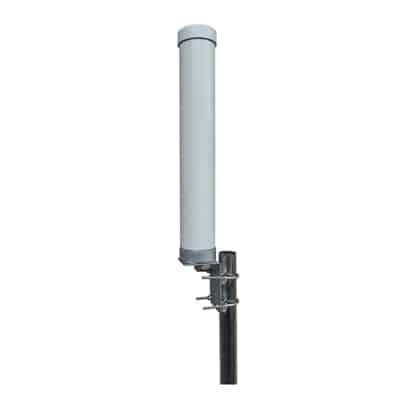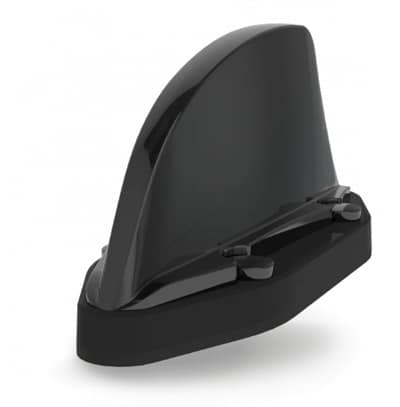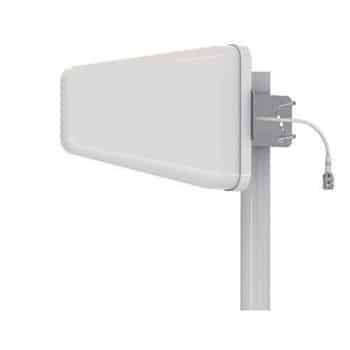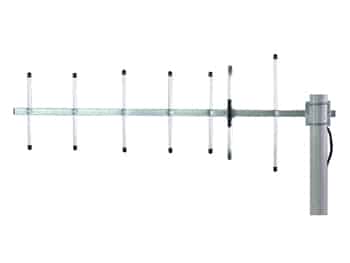
In this article, we will discuss about directional antenna. It is a broad category of antenna that has high directivity and are tailored for different applications. First, we will understand the importance of antennas in communication. With the increasing popularity of wireless communication, antennas have become a crucial element in modern communication systems.
Antennas, receive and transmit radio signals wirelessly over wireless media(electromagnetic wave). There are several types of antennas. Most of these antennas are categorized based on their application, shape of the generated waveform, and operating frequency range. Based on the generated waveform’s shape, antennas are categorized into two major categories, namely omni-directional and directional antennas. This article will briefly discuss directional antennas, different types of directional antennas, their applications, advantages, and disadvantages. Finally, we will conclude by identifying some key factors to be considered when selecting a directional antenna for a given application.
Table of Contents
ToggleWhat is a Directional Antenna?
As mentioned above, antennas are categorized based on the generated waveform as omni-directional and directional antennas. Here, omni-directional antennas generate a waveform that provides coverage of 360 degrees in all directions, while a directional antenna would provide coverage confined to a sector of angle. High directional gain is considered the main characteristic of a directional antenna. Moreover, most directional antennas can change direction electronically without any mechanical supporting system. This is another characteristic of directional antennas. The major parameters that govern these characteristics are the directivity and radiation plot of the antenna.
Directional antennas operate similarly to all the other antennas. They receive and transmit radio signals generated by an RF backend which generates electrical signals. These electrical signals are then fed to an RF synthesizer to harmonize with the required frequency. In the case of directional antennas, the generated radio signals are tightly narrowed to a beam that is focused in a given direction.
Types of directional antenna
Now let us briefly discuss some of the types of directional antennas. These directional antennas are classified based on their radiation plot. Some of the most prominent types of directional antennas are:
Yagi antennas: This type of antenna consists of multiple directors which helps to direct the radiation beam to a certain direction. These antennas are primarily used for TV and radio broadcasting. Yagi-Uda antennas are suitable for applications that require high gain and high directivity. Furthermore, these antennas are used in point-to-point communications.
Parabolic antennas: These antennas consist of a parabola with either a solid plate or a wire mesh plate as the reflector to achieve a directional beam in each direction. Parabolic antennas are designed to withstand high speed winds and achieve long distance point-to-point communication. Moreover, parabolic antennas are considered precision antennas, due to their ability to focus on a single point of interest.
Panel antennas: Panel antennas are specially designed to be mounted on top of towers and walls. They are widely used in Wi-Fi and cellular networks. They can facilitate a wide range of coverage compared to other types of directional antennas and hence are used in both indoor and outdoor environments.
Log periodic antennas: These antennas are like Yagi antennas, but the dipole elements of these antennas are placed in a triangular manner to achieve a logarithmic scaling of radio signal frequency. This is achieved by decreasing the dipole elements along the antenna’s feedline. These antennas can handle high frequencies.
Dish antennas: Dish antennas are equipped with a dish reflector which amplifies the gain of the antenna. These antennas are used for satellite communication systems that require high gain.
Sector antennas: These antennas are mounted on top of cellular network towers to provide transmission to an area sector. The most common sectors covered by these antennas are 60, 90, and 120 degrees. These antennas are mostly used in cellular networks and high-gain Wi-Fi systems.
Symmetrical horn antennas: These antennas are designed to achieve symmetrical radiation plots over a given direction. They provide a wide beam width when compared to other directional antennas. They are used in defense and aerospace applications.
Applications of directional antenna
We have discussed some of the key characteristics of directional antennas. Now let us discuss some of the prominent application areas of directional antennas. The major application areas of directional antennas are as follows:
- Broadcasting: Directional antennas such as dish and parabolic antennas are widely used in radio and satellite broadcasting. Moreover, Yagi-Uda antennas are used for radio and TV broadcasting purposes.
- Telecommunications: In telecommunications, directional antennas play a crucial role. Many applications in telecommunication are realized using directional antennas. Sector and panel antennas are widely used in cellular networks towers and Wi-Fi systems. Furthermore, helical and patch antennas are used for different IoT devices to realize connection to larger cellular networks.
- Wireless Networking: Sector and panel antennas are widely used in Wi-Fi systems and computer networking systems to achieve high gain in an indoor setting. Moreover, directional antennas play a key role in realizing modern IoT networks.
- Satellite communications: Dish antennas are used in satellite communications due to their high gain and precision.
- Military and defense: Directional antennas such as helical, patch, and log periodic antennas are used in military applications for communications, target localization, and tracking.
Advantages of directional antenna
Some of the prominent advantages of directional antennas are as follows:
- Directional antennas can facilitate radio signals with high directional gain. They can provide signals with improved strength and quality.
- Directional antennas can provide a wide range of coverage, enabling transmission for a longer distance compared to omni-directional antennas.
- Due to their high directional gain, these antennas can enable transmission even in extremely interfered environments.
Disadvantages of directional antenna
Despite their advantages, there are some disadvantages of using directional antennas as well. These include:
- They provide a limited coverage area. Directional antennas can only provide coverage only to a given area or a sector
- Since the directional antennas are required to cover a predetermined area, their installation, and setup are complex when compared to omni-directional antennas
- Directional antennas are not flexible in design and versatile as omni-directional antennas
Comparing omni-directional and directional antennas
We have outlined some of the major advantages and disadvantages of directional antennas. Now let us discuss about directional antenna vs. omni-directional antennas. When compared to omni-directional antennas, directional antennas can provide coverage to a limited area, whereas omni-directional antennas provide 360-degree coverage. However, when compared to omni-directional antennas, directional antennas have superior performance for interference. This is due to their high directional gain. Another aspect to be considered is the versatility of these antenna types. Omni-directional antennas are more versatile when compared to directional antennas due to their small size and simple design. Therefore, omni-directional antennas are widely used in IoT applications when compared to directional antennas.
How to choose the right directional antenna?
When it comes to choosing the right directional antenna, you should be aware of the different types of directional antennas available. Depending on the type of directional antenna the use case of the antenna varies. However, depending on the following factors, we can narrow down our options. These factors include:
- Required operating frequency range: We must determine the required frequency range of operation. This will help to determine the number of dipole elements and sizing of the reflector elements in the antenna.
- Gain: This will ensure the proper selection of the antenna to suit the maximum allowable interference in the communication network.
- Beamwidth: The expected beamwidth of the antenna will determine the area of coverage and the direction of coverage of the antenna.
- Operating environment: The operating environment will help to determine the interferences and the type of antenna that suits the given environment. It will also help to understand the gain requirement of the antenna.
- Installation: Finally, due to the diverse varieties of directional antennas, it is necessary to consider product specific installation and setup tips provided by the manufacturer.
Conclusion
In this article, we discussed directional antennas and their types. Different types of directional antennas were elaborated with different use cases of each type. Moreover, the advantages and disadvantages of directional antennas were discussed to gain insight into their applications. Finally, some key factors to be considered when choosing a directional antenna were provided.







